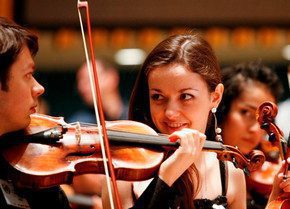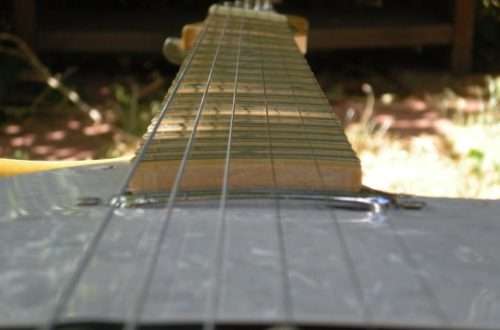Musical instruments for children
Contents
Which instrument should your child choose? At what age can he be taught to play? How to understand the variety of musical instruments for kids? We will try to answer these questions in this material.
It should be noted right away that it would be good to explain to children the nature of its sounds upon their first acquaintance with the instrument. To do this, parents need to know the traditional classification of musical instruments in general. Everything is simple here. The main groups of musical instruments are strings (bowed and plucked), wind instruments (wooden and brass), various keyboards and percussion instruments, as well as a specific group of children’s instruments – noise instruments.
Musical instruments for children: strings
The sound source for these instruments is stretched strings, and the resonator is a hollow wooden body. This group includes plucked and bowed musical instruments.
In plucked instruments, as you might guess, sound is produced by plucking the strings with your fingers or a special device (for example, a pick). The most famous plucked strings are domras, guitars, balalaikas, zithers, harps, etc.
In bowed strings, the sound is produced using a bow. In this group, the most suitable instrument for a child would be a violin – a cello and, especially, a double bass, which are still too massive for children.
Learning to play string instruments is a rather difficult and time-consuming task. It requires the baby to have strong and dexterous hands, patience, and good hearing. It is recommended to teach a child to play plucked string musical instruments from the age of six or seven, when the fingers are strong enough. You can start learning to play the violin at the age of three.
Musical instruments for children: wind instruments
Wind musical instruments for children are divided into wooden and copper. Sound production in both of them is done by blowing air.
Wooden instruments include:
- flute;
- clarinet;
- phage, etc.
The brass group includes:
- tube;
- trombone;
- tuba, etc.
To master children’s wind instruments, a large lung capacity and developed hand motor skills are required. Children five years old can try to play a simplified instrument – the pipe. It is recommended to learn to play professional instruments from the age of 10, or even 12.
Musical instruments for children: keyboards
This is probably one of the most diverse groups of instruments. Most often, the following groups and types of keyboards are used to teach children:
- keyboard strings (piano).
- reed keyboards (bayan, melodica, accordion).
- electronic keyboards (synthesizer, children’s electric organ).
The last group is perhaps the most common. The industry is now producing synthesizers aimed even at children one and a half to two years old. Such instruments produce the simplest sounds (most often a diatonic scale, in one or two octaves) and are focused more on the development of children than on learning to play. It is recommended to teach children to play the keyboard professionally from the age of five to seven years.
Musical instruments for children: drums
Percussion musical instruments for children can be divided into those that have a scale and those that do not. The first group includes a variety of xylophones and metallophones. Their scale can be diatonic and chromatic. They can be played with sticks with rubber or wooden tips.
It is recommended to buy toy xylophones for children starting from nine months – for the development of hearing and cause-and-effect phenomena (hit – sound is produced). Older kids will be able to repeat the simplest melody after their parents. It is recommended to learn the game professionally from about 11 years of age.
The group of percussion instruments that do not have a scale includes bells, castanets, tambourines, triangles, bells and drums. Children’s first acquaintance with such instruments begins at about one year of age. It is better to start professional development at the age of 13.
Musical instruments for children: noise instruments
Essentially, this is a specific group of percussion instruments (also called manual percussion). This includes maracas, noise boxes, shakers, rattles, etc.
This is where kids usually begin to get acquainted with music. After all, in fact, the same rattle is a noise instrument. They allow you to develop a sense of rhythm and lay the foundations for future musical development.
By the way, if you doubt that your child will be able to master this or that instrument, or if you think that he will not be interested in it, be sure to watch these two videos: they will dispel all your fears, charge you with positivity and fill you with love of life:



